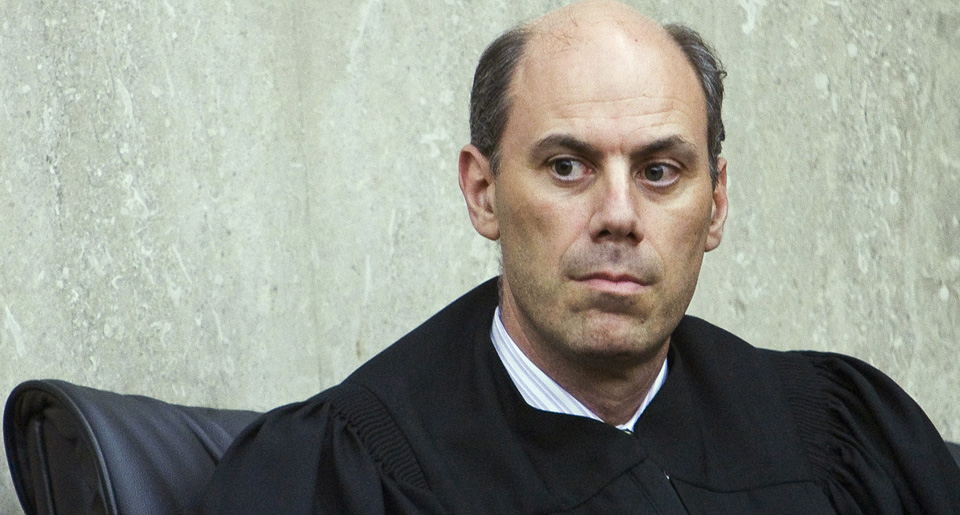
Judge Boasberg is sending mixed signals. The now enigmatic jurist, in a verbose 91-page opinion, has ruled that some parts of the approval of the Dakota Access Pipeline (DAPL) did not meet the requirements of the National Environmental Policy Act (NEPA) and that there needs to be further environmental review. The wily jurist, with oh so many tricks up his sleeve, still will not shut down DAPL in the interim. This begs the question- what kind of sense does that make? A lot if you are a judge who favors powerful oil corporations.
On June 14, after a four month hiatus, Boasberg ruled that the United States Army Corps of Engineers (USACOE) had “substantially complied” with federal law in its environmental reviews of DAPL. The ruling stated “that although the Corps substantially complied with NEPA in many areas, the court agrees that it did not adequately consider the impact of an oil spill on fishing rights, hunting rights or environmental justice or the degree to which the pipeline’s effects are likely to be controversial.” As for “the degree to which the pipeline’s effects are likely to be controversial”- what does the court mean? Boasberg has entered the realm of the opaque.
Energy Transfer Partners (ETP), the parent company of DAPL, said the ruling was a “limited remand” and did not interfere with pipeline operations. So far ETP is right, as the oil flows on.
But, let’s analyze this anomalous decision from the standpoint of long held U.S. jurisprudence. In cases such as this, where a permit is judicially ruled to be incomplete but has already been issued, the permit is pulled. In this instance that would mean shutting down the pipeline so that no more oil would flow while the matter is being further litigated. If the inadequacy is cured, by showing with an adequate environmental study that the pipeline would not violate environmental law, the oil would resume flowing. But if the review shows the pipeline would violate environmental law, harming the public interest, then the pipeline would be permanently shut down.
But, lo and behold, our esteemed judge has turned the legal procedure upside down. He rules that the pipeline approval violated the law , which renders the approval illegal, but allows the illegality to continue. Oil flows at the rate of 540,00 to 570,000 barrels a day. Bumbling, blundering Boasberg contends he can’t make a decision and comes up with an elaborate and Byzantine briefing schedule. This is judicial puzzlement.
Since keeping the pipeline open is such a flagrant departure from long established legal procedure, this gives rise to suspicions about the Judge’s future rulings. So far Boasberg has ruled against the tribes at every turn. The Standing Rock Sioux Tribe (SRST) and the Cheyenne River Sioux Tribe (CRST) had previously come before this same jurist to assert claims under the National Historic Preservation Act and the Religious Freedom Restoration Act. The first favorable ruling came under the National Environmental Policy Act on June 14.
In addition to the Standing Rock Sioux and the Cheyenne River Sioux Tribes, the Oglala Sioux Tribe and the Yankton Sioux Tribe are now parties in the lawsuit. They had filed separate complaints against the United States Army Corps of Engineers (USACOE) that were lately joined with those of the other two tribes.
On June 21, as per the judge’s order the parties returned to court for a status hearing conference. At this conference the judge set up an elaborate briefing schedule. The schedule runs from July 17 to August 28, and orders everything but the kitchen sink: the submitting of opening briefs, responses to briefs, more intervenors, more consolidations, more replies and sur-replies on different dates. All of this amounts to a very lengthy, drawn out, and convoluted briefing schedule when the court already has all the facts before it needed to make a decision. This, again, is cause for suspicion as to the motives of the court and its future decisions in this matter.
Interestingly and refreshingly, the Yankton Sioux Tribe did not support the “ lengthy briefing schedule,” their attorneys wrote in advance of the hearing. “The Tribe’s position is that the issues for briefing can be completed much more quickly,” the filing stated. The court, by not immediately shutting down the pipeline after ruling that the approval violated the law, is maintaining an illegal status quo.
The disingenuous jurist should have shut down the pipeline pending completion of another review or ordering an Environmental Impact Statement (EIS). The court, despite its lengthy 91-page opinion, has not gone so far as to order an EIS; but according to EarthJustice, the environmental law firm representing the tribes, is instead ordering the Corps to conduct a modified Supplemental Environmental Assessment.
The Corps and Justice Department officials have declined to indicate as to what they will do, but said they might expect to propose a timeline for the mandated review around mid-July. They are obviously in no hurry as long as the oil is flowing. A shutdown would sure prompt a speedier than usual review by the Corps. So far, the Corps has not sent any notice to the Federal Register setting up a review schedule.
Officially, Corps spokeswoman Catalina Carrasco responded that the agency was still reviewing Boasberg’s ruling and couldn’t immediately comment on a timeline for the mandated additional review or whether an alternative could be digging up the pipeline and moving it elsewhere.
EarthJustice indicated the Corps could simply affirm its earlier decision and issue the same permit or it could decide on an alternative route or other safety/mitigation choices.
My opinion is that the judge purposely waited for the oil to start flowing before he issued his partially favorable decision sending mixed messages. If Boasberg had rendered his ruling before the oil started flowing there is no lawful way that the pipeline would have become operational. It can only be surmised that the court contrived all this in timing the decision to give oil a heads-up to start so that it could continue to flow in the meantime.
Moreover, the lengthy briefing timeframe guarantees that the wealthy corporate backers of this rapacious, multi-billion project will to continue to rake in a lion’s share of profits in violating the laws of the land. The judge’s motives must be viewed in the crucible of justice. The judge’s ruling is a cautionary victory and should be no cause for a premature rush to celebrate.
Keep in mind the we live in apartheid USA where there is rampant inequality at all levels of the so-called justice system. Remember that DAPL was originally routed for just north of the predominantly white city of Bismarck but that the white folks of that municipality said “no” because of fears that the pipeline would endanger their water supply. That’s all it took, just some simple objections and it was rerouted. What is dangerous to European Americans is foisted on Native Americans. It is fine for Indians to drink oil. This system is gleefully proclaiming to Natives, “have another cup of environmental genocide!”
A few objections is all it took from the city fathers of “white” Bismarck for the pipeline to be rerouted to Standing Rock. For Natives, there were not just objections but massive demonstrations with tribes from all over the country. Countless supporters from countries around the globe in stood up the face of gratuitous militarized police violence (war crimes, if you will) committed against the water protectors. Tear gas, water cannons in sub-freezing temperatures turned on men, women, the elderly. Rubber bullets targeting peaceful, non-violent, praying demonstrators. Limbs nearly torn from bodies, eyes shot out, and brutality that amounted to outright torture and yet the pipeline goes through.
Let us all remember, and never forget, that we live in apartheid USA. So hypocritically proud to tout that it is “the land of the free and the home of the brave.”
Remember, that American jurisprudence is so malleable that it can be manipulated at the bias of a given judge to reach the most unconscionable results.
In the meantime the “hot potato” pipeline issue has been passed by the dissembling judge back to the hands of the Army Corps of Engineers. It must be to noted that this is the same Corps that was once described by Supreme court Justice William O. Douglas as “ Public Enemy Number One” of the environment. It must also be added that the Corps’ record, particularly in the DAPL issue, can also qualify it as “Public Enemy Number One “ of Native people.
The DAPL case so profoundly illustrates that in capitalist society the law protects property, enforces social and economic inequality, and the rule of the propertied, exploitative classes. Judge Boasberg is an excellent example of the utilization of the law for unconscionable, even genocidal results.
The issue is what can be done to keep this struggle on the road to justice. We must redouble our efforts in the strengthening of the popular movement and the exercise of political pressure through the vehicle of mass struggle in light of the oppressive zigzags of the so-called US “justice system.”










